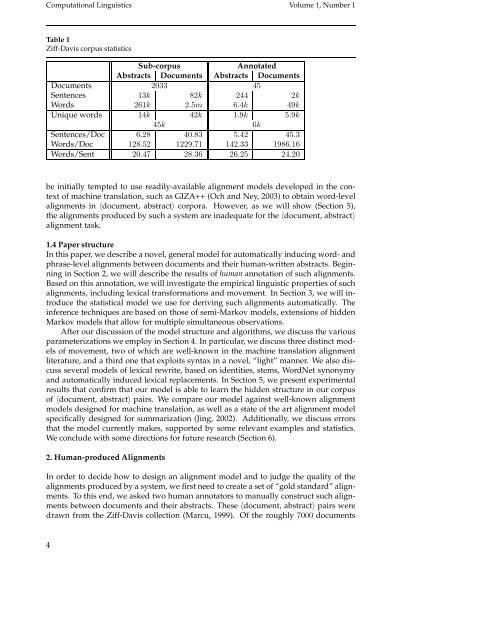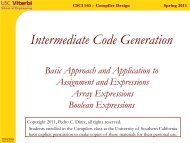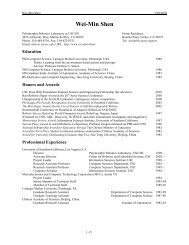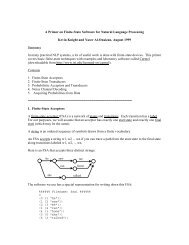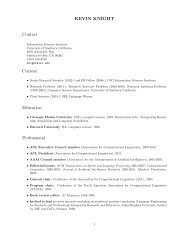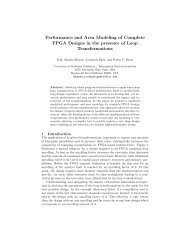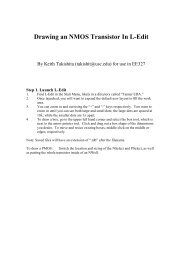Induction of Word and Phrase Alignments for Automatic Document ...
Induction of Word and Phrase Alignments for Automatic Document ...
Induction of Word and Phrase Alignments for Automatic Document ...
Create successful ePaper yourself
Turn your PDF publications into a flip-book with our unique Google optimized e-Paper software.
Computational Linguistics Volume 1, Number 1<br />
Table 1<br />
Ziff-Davis corpus statistics<br />
Sub-corpus Annotated<br />
Abstracts <strong>Document</strong>s Abstracts <strong>Document</strong>s<br />
<strong>Document</strong>s 2033 45<br />
Sentences 13k 82k 244 2k<br />
<strong>Word</strong>s 261k 2.5m 6.4k 49k<br />
Unique words 14k 42k 1.9k 5.9k<br />
45k 6k<br />
Sentences/Doc 6.28 40.83 5.42 45.3<br />
<strong>Word</strong>s/Doc 128.52 1229.71 142.33 1986.16<br />
<strong>Word</strong>s/Sent 20.47 28.36 26.25 24.20<br />
be initially tempted to use readily-available alignment models developed in the context<br />
<strong>of</strong> machine translation, such as GIZA++ (Och <strong>and</strong> Ney, 2003) to obtain word-level<br />
alignments in 〈document, abstract〉 corpora. However, as we will show (Section 5),<br />
the alignments produced by such a system are inadequate <strong>for</strong> the 〈document, abstract〉<br />
alignment task.<br />
1.4 Paper structure<br />
In this paper, we describe a novel, general model <strong>for</strong> automatically inducing word- <strong>and</strong><br />
phrase-level alignments between documents <strong>and</strong> their human-written abstracts. Beginning<br />
in Section 2, we will describe the results <strong>of</strong> human annotation <strong>of</strong> such alignments.<br />
Based on this annotation, we will investigate the empirical linguistic properties <strong>of</strong> such<br />
alignments, including lexical trans<strong>for</strong>mations <strong>and</strong> movement. In Section 3, we will introduce<br />
the statistical model we use <strong>for</strong> deriving such alignments automatically. The<br />
inference techniques are based on those <strong>of</strong> semi-Markov models, extensions <strong>of</strong> hidden<br />
Markov models that allow <strong>for</strong> multiple simultaneous observations.<br />
After our discussion <strong>of</strong> the model structure <strong>and</strong> algorithms, we discuss the various<br />
parameterizations we employ in Section 4. In particular, we discuss three distinct models<br />
<strong>of</strong> movement, two <strong>of</strong> which are well-known in the machine translation alignment<br />
literature, <strong>and</strong> a third one that exploits syntax in a novel, “light” manner. We also discuss<br />
several models <strong>of</strong> lexical rewrite, based on identities, stems, <strong>Word</strong>Net synonymy<br />
<strong>and</strong> automatically induced lexical replacements. In Section 5, we present experimental<br />
results that confirm that our model is able to learn the hidden structure in our corpus<br />
<strong>of</strong> 〈document, abstract〉 pairs. We compare our model against well-known alignment<br />
models designed <strong>for</strong> machine translation, as well as a state <strong>of</strong> the art alignment model<br />
specifically designed <strong>for</strong> summarization (Jing, 2002). Additionally, we discuss errors<br />
that the model currently makes, supported by some relevant examples <strong>and</strong> statistics.<br />
We conclude with some directions <strong>for</strong> future research (Section 6).<br />
2. Human-produced <strong>Alignments</strong><br />
In order to decide how to design an alignment model <strong>and</strong> to judge the quality <strong>of</strong> the<br />
alignments produced by a system, we first need to create a set <strong>of</strong> “gold st<strong>and</strong>ard” alignments.<br />
To this end, we asked two human annotators to manually construct such alignments<br />
between documents <strong>and</strong> their abstracts. These 〈document, abstract〉 pairs were<br />
drawn from the Ziff-Davis collection (Marcu, 1999). Of the roughly 7000 documents<br />
4


